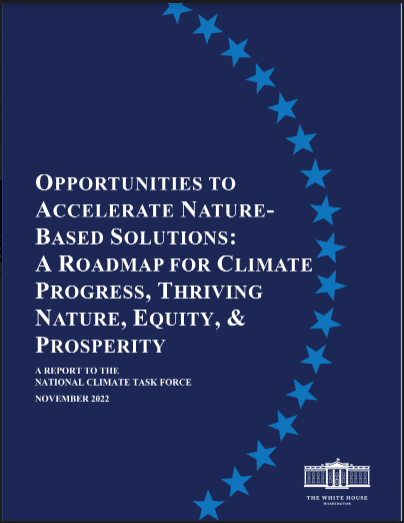Nature-based Climate Solutions & the Cool Boulder Campaign
Our Community Faces a Problem:
Our climate is changing. Summers are getting hotter, winter storms are becoming more unpredictable and strong winds are becoming more common. Climate change is having an enormous impact on the natural systems around us, making our region drier and threatening native plant and animal species.
Photo credit: U.S. Embassy in Egypt, released at COP27
Nature-based Climate Solutions:
However, we can make our community more resilient and equitable by tapping into the natural systems and processes that regulate our climate, which nature has developed over a timespan much longer than humans! This approach is called nature-based climate solutions (NbCS).
Why are Nature-based Climate Solutions Important?
They address the causes of climate change:
One of the main causes of climate change is land degradation. Humans have disturbed natural systems that previously regulated our climate through burning fossil fuels, clear-cutting forests, destroying grassland ecosystems, draining wetlands, and so on. These practices have released millions of tons of carbon into the atmosphere, driving global warming.
By tapping into NbCS to reverse these practices and trends, we can take advantage of the natural world’s built-in functions to absorb carbon and slow climate change.
They protect our community from the impacts of climate change:
NbCS not only reduce emissions that cause warming and climate change, but they can also make Boulder a more livable and equitable community!
In the face of a warming climate, improved land practices can protect Boulder from excessive heat and other risks, such as flooding and wildfires. For example, planting more trees helps our community in several ways:
Trees absorb carbon in their cells, reducing emissions.
Trees provide shade that cools the area around them.
They change water from a liquid to a gas, increasing local humidity and cooling the area around them - a process called evapo-transpiration.
The water vapor that trees produce eventually becomes clouds and rain that cool off our community and rewet drying landscapes.
NbCS tap into nature’s innate ability to absorb carbon and water, which stabilize climate extremes and regulate our community’s climate!
Attendees of Cool Boulder’s Urban Forestry Symposium show off their Cool Boulder gear.
Photo credit: Brett KenCairn
What is the Cool Boulder Campaign?
Cool Boulder is the community’s nature-based climate solutions campaign.
It brings the city, community partners, and individuals together to partner with nature to address the climate crisis locally. To prepare for a changing climate, we must lay the groundwork for our community to face higher temperatures, more extreme and unpredictable storms, drier landscapes, and higher flood and fire risk. The fastest, easiest and cheapest way to do this is by implementing NbCS.
Kids learn about the importance of pollinators at Boulder’s annual Pollinator Festival.
Photo credit: Daniel Hanson
Cool Boulder has three main action areas. These action areas use a systems-based approach by reinforcing each other to create a more livable and equitable community:
Pollinator Pathways – corridors of diverse plants that support cooling temperatures, foster biodiversity, provide habitat and resources for native pollinators, and manage carbon and water. In doing so, these pathways reduce the impacts of climate change and biodiversity loss.
Connected Canopies – major investments to both maintain the health of our community’s existing tree canopy and plant thousands of additional trees. Many of these new trees will need to be planted on private land such as residential property. Expanding our community’s tree canopy will provide essential cooling in the form of shade and evapo-transpiration.
Absorbent Landscapes - Absorbent landscapes hold more water, carbon, and thermal energy, which helps cool our community and prevent dangerous flooding and fires. This action area is focused on improving soil’s ability to capture carbon, hold water, and support life through regenerative agriculture and sustainable land management.
How to get involved with Cool Boulder:
Want to get involved in local climate action? Learn more about the campaign and how to get involved by visiting our website: Cool Boulder



